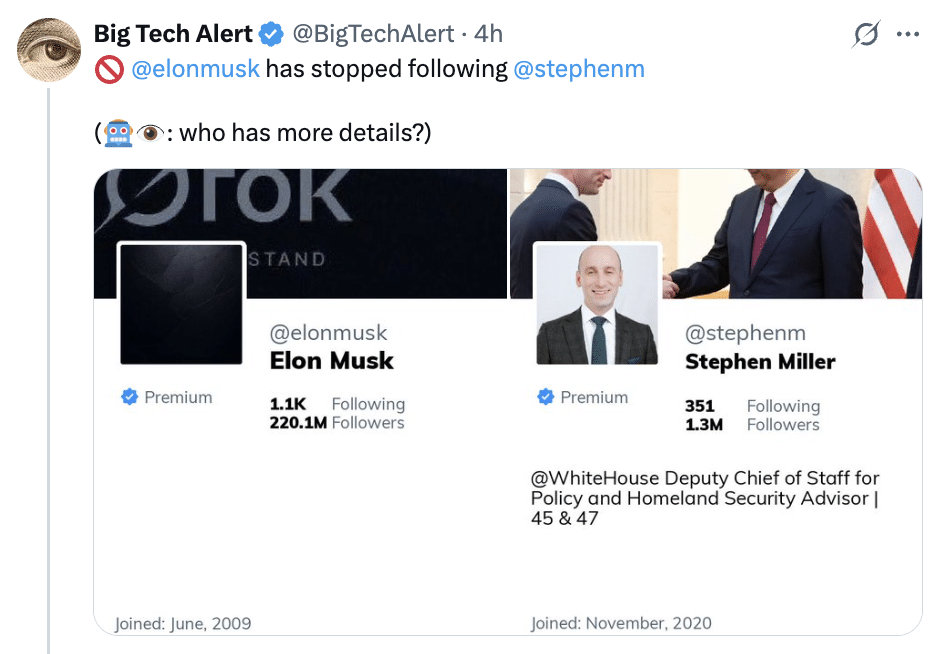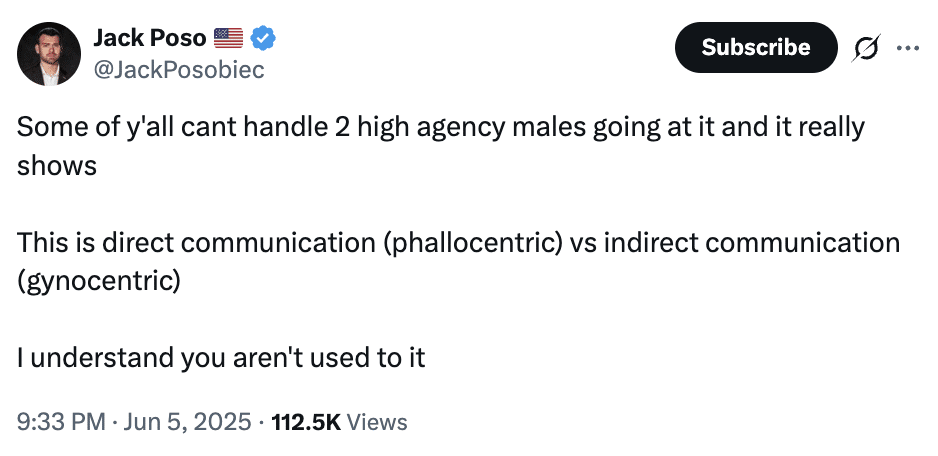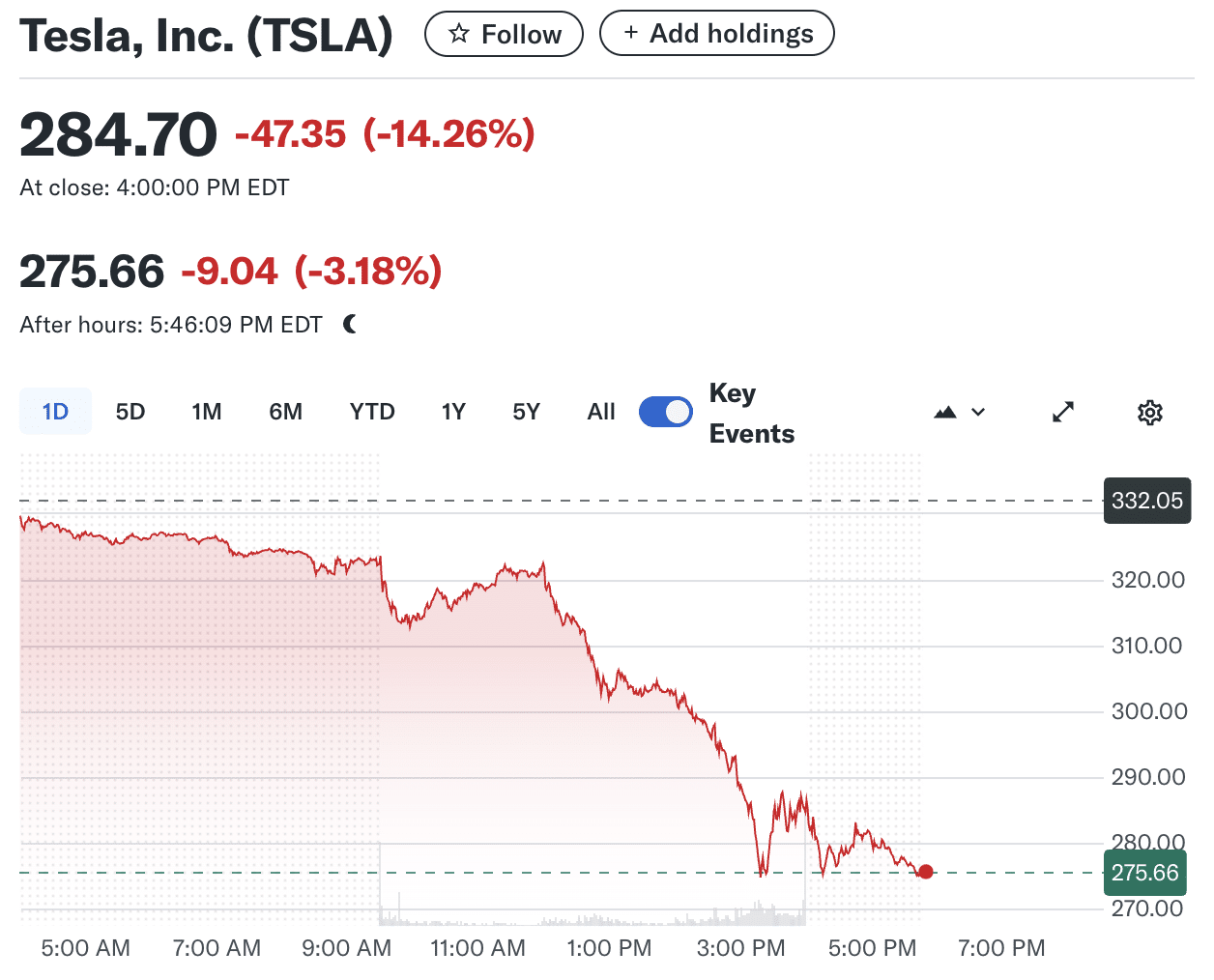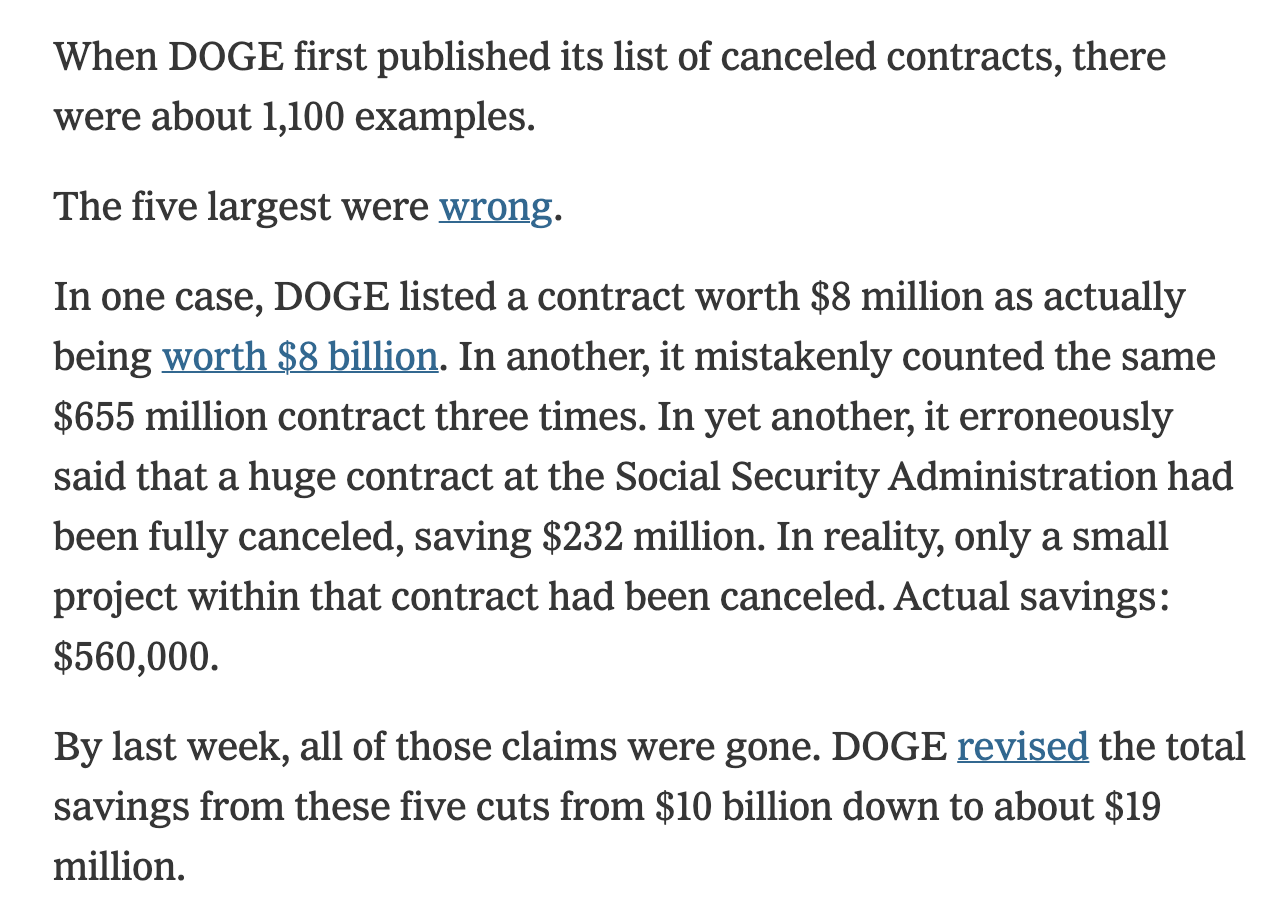Yesterday, arguably for (at least) the second time, Trump declared fealty to Vladimir Putin.
As I contemplated the awful but in no way surprising developments (here’s a good podcast, featuring Marc Polymeropoulos, Doug Lute, and Rosa Brooks), I thought about the various ways Trump is sabotaging the United States, based on apparently different motivations.
But we only assume those motivations are different because we (or much of the legacy press, anyway) accept the claimed motivation Trump offers. When you look at all of them together, you simply can’t rule out they’re all part of the same effort to capitulate to Putin.
Project 2025
There’s a consensus that Trump is following the plan mapped out in Project 2025. This Politico report, from early February, laid out how Executive Orders Trump had signed implemented plans to attack diversity and LGBTQ protections, attack migrants, and protect disinformation. It focuses on fossil fuel plans that have mostly defunded renewable energy without raising fossil fuel exploitation (in part because it was already so high under Biden).
Even if that were the only thing going on or if that were really what was going on, it would raise real questions about foreign influence. Last year, Casey Michel mapped out how Viktor Orbán used the Heritage Foundation as a beachhead for his influence peddling in the US (which I discussed in this post on Trump’s attempt to distance himself from Project 2025).
While much attention has understandably focused on Heritage’s so-called “Project 2025,” which provides a roadmap for Trump to seize as much power as he can, such a shift has extended to foreign policy. This has been seen most especially in Heritage leading the effort to gut funding for Ukraine. But it’s also evident in the way Heritage has endeavored to anchor its relations with Orbán, making Budapest once more America’s preferred partner in Europe—regardless of the cost.
Much of that shift is downstream from Heritage’s leadership, overseen by Kevin Roberts. Appointed as Heritage’s president in 2021, Roberts immediately began remaking Heritage’s priorities with a distinctly pro-Orbán bent—and began opening up Heritage as a vehicle for Hungarian influence in the U.S.
Part of that involved things like last week’s confab, one of many meetings between Roberts and Orbán. (After one 2022 sit-down, Roberts—who, among other things, has said he doesn’t think Joe Biden won the 2020 election—posted that it was an “honor” to meet with Orbán, praising his “movement that fights for Truth, for tradition, for families.”) But the relationship is structural as well: Heritage finalized what they refer to as a ‘landmark’ cooperation agreement with the Danube Institute, a Hungarian think tank that appears to exist only to praise Orbán’s government.*
The Budapest-based Danube Institute is largely unknown in the U.S., but it has transformed in recent years into one of the premier mouthpieces for propagating Orbánist policies. While it is technically independent, it is, as Jacob Heilbrunn notes in his new book on the American right’s infatuation with dictators, located “next to the prime minister’s building and funded by Orbán’s Fidesz party.” Indeed, the Hungarian think tank is overseen by a foundation directly bankrolled by the Hungarian state—meaning that the Danube Institute is, for all intents and purposes, a state-funded front for pushing pro-Orbán rhetoric.
A spokesperson for the Heritage Foundation told The New Republic that their arrangements with the Danube Institute is “restricted to carrying out educational research and analysis, as well as related events—none of which involved any financial commitment from either party” and that “at no point did Heritage receive funds from or pass funds to the Danube Institute, the Hungarian government, or the prime minister’s office.”
The Danube Institute claims it is dedicated to “advocat[ing] conservative and national values and thinking,” which almost always ends up with the institute praising Orbán’s pronouncements. It has become, according to Hungarian journalists at Atlatszo, “one of the main tools of the Orbán government’s ideological expansion abroad”—and one of the “main vehicles” to “building a political network in the United States.
Christopher Rufo, the propagandist behind the demonization of trans people, has ties to the Danube Institute.
So even if this was just about implementing Project 2025, that would best be described as replacing American democracy with Orbanist authoritarianism — adopting the model from a key Putin puppet.
DOGE infiltration and destruction of US government
There have been a slew of stories about how DOGE provided cover for Russ Vought and Stephen Miller to implement Project 2025. Wired, for example, described how Stephen and his wife Katie, who is formally on the DOGE team, serve as gatekeepers to Elon and use Elon to carry out their dirty work.
Meanwhile, Stephen Miller has, along with Project 2025 coauthor and Office of Management and Budget director Russell Vought, became one of Musk’s closest allies in the administration, The New York Times reported earlier this month. WIRED has learned that the relationship is far closer, and more complicated, than has been previously known publicly.
In many ways, Musk’s targeting of federal agencies is perfectly in sync with the aims of Miller, who has championed DOGE’s work internally and even helped in making a lot of it possible. (In public, Miller has equated federal workers with “radical left Communists” and “criminal cartels.”) Still, sources tell WIRED that Trumpworld is more comfortable with Musk taking the heat for the recent federal cuts rather than the less famous—and, in their view, far less telegenic—Miller.
Yet through their actions so far, the Millers and Musk have developed a MAGA version of the Pet Shop Boys adage from the song “Opportunities (Let’s Make Lots of Money)”: You’ve got the brawn / I’ve got the brains. Stephen Miller’s knowledge of the federal apparatus, Katie Miller’s contacts on Capitol Hill, and the couple’s good standing among Trump loyalists, coupled with Musk’s relentless ambition and effectively infinite resources, made the scale of the DOGE government takeover possible. Musk is not the independent actor he’s often portrayed as and taken to be, in other words, but is rather carrying out actions essentially in concert with the man to whom the president has delegated much of the day-to-day work of governance.
“Stephen is kind of the prime minister,” one of three Republicans close to Trump and familiar with the situation tells WIRED. Another Republican familiar with the dynamic also used the term “PM” to describe Miller, short for prime minister. The implication is that Miller is carrying out the daily work of governance while Trump serves as head of state, focusing on the fun parts of being president.
But DOGE is going beyond the scope of Project 2025, and in ways that directly harm the United States.
Take the Project 2025 recommendations on USAID, the first target of DOGE. DOGE adopted the general theme of the Project 2025 chapter — that USAID had been used to implement a lot of radical plans. But the virtual elimination of USAID implemented last week goes well beyond Project 2025’s recommended reversal to 2019’s budget of $39.3 billion.
Project 2025 hailed Trump’s use of USAID to push for religious protection for Christians which — as I showed — got shut down early along with everything else.
It promoted international religious freedom as a pillar of the agency’s work and built up an unprecedented genocide-response infrastructure.
It specifically called for greater reliance on local NGOs — and pointed to PEPFAR as a model.
Streamlining Procurement and Localizing the Partner Base. USAID is a grantmaking and contracting agency that disburses billions of dollars of federal funding in developing countries through implementing partners, such as U.N. agencies, international NGOs, for-profit companies, and local nongovernmental entities. In rare instances, such as in Jordan and Ukraine, the agency provides direct budget support to finance the operations of host-country governments. USAID far more often counts on expensive and ine!ective large contracts and grants to carry out its programs. It justifies these practices based on speed and a lower administrative burden on its institutional capacity.
[snip]
The President’s Emergency Plan for AIDS Relief (PEPFAR) has shown that localization at scale is possible within a short time span. Over the four years of the Trump Administration, the multibillion-dollar program increased the amount of funding disbursed to local entities from about 25 percent to nearly 70 percent with positive overall results. This model should be replicated across all of USAID.
But as declarations in various lawsuits repeat over and over, these local partners are not getting paid, and it’s destroying the credibility of the US (and rule of law).
11. Currently my mission has more than $30 million in unpaid invoices for 2 months of implementing partners’ work, with half of those past Prompt Payment Act due date (30 days) and incurring interest every day. If one were to extrapolate the numbers across all of the missions and USAID/Washington, given that annual USAID appropriation is $40 billion, the total dollar amount of unpaid invoices would certainly surpass $1billion at the most conservative estimate.
[snip]
13. Arbitrary withholding of due payments to U.S. and non-U.S. based partners does grave damage to the reputation and reliability of the U.S. government both domestically and internationally. USAID is a USG Agency which signed the contracts and grants in line with the Code of Federal Regulations and other statutes; USG refusal to pay for the past performed work and non-compliance with the TRO can shatter Americans’ certainty in the rule of law.
Rather than empowering local partners and capabilities, the quick decimation has devastated them — and left Americans still located overseas exposed to backlash.
USAID is just the most substantiated example of the sheer waste DOGE is creating. We’re seeing similarly stupid decisions in the firings of critical personnel (some of whom get hired back), but also the elimination of long-term maintenance or safety programs that will cost far more when those protections are gone.
Project 2025 envisioned stripping civil service protections and politicizing the bureaucracy. But with DOGE cuts, it’s not clear the bureaucracy can be rebuilt, even assuming the Heritage hires knew what they were doing. Meanwhile, the method of those cuts is more likely to elicit a backlash from judges, potentially even from the Supreme Court justices whom right wingers were counting on to bless all this.
And all that’s before you contemplate the possibility that Elon’s DOGE boys are doing something else with the data they’re accessing, or — intentionally or not — setting up backdoors via which adversaries can do so themselves.
Assume you were a true believer in Project 2025 (and not far greater authoritarianism). DOGE puts all that at risk, because by breaking so much so early, it is eliciting backlash and collapse of the economy.
The installation of useful idiots
It’s not just Elon who is making a mess. So are the other unqualified useful idiots Trump has installed — people like Pete Hegseth (who has fired three senior women officers after assuring Joni Ernst he wouldn’t target women) and Tulsi Gabbard (who parroted the same Russian propaganda she partly disavowed to get confirmed yesterday) and RFK Jr (who reneged on his promise not to cut off vaccine programs) and Kash Patel (who reneged on his promise to appoint a career FBI Agent as his Deputy).
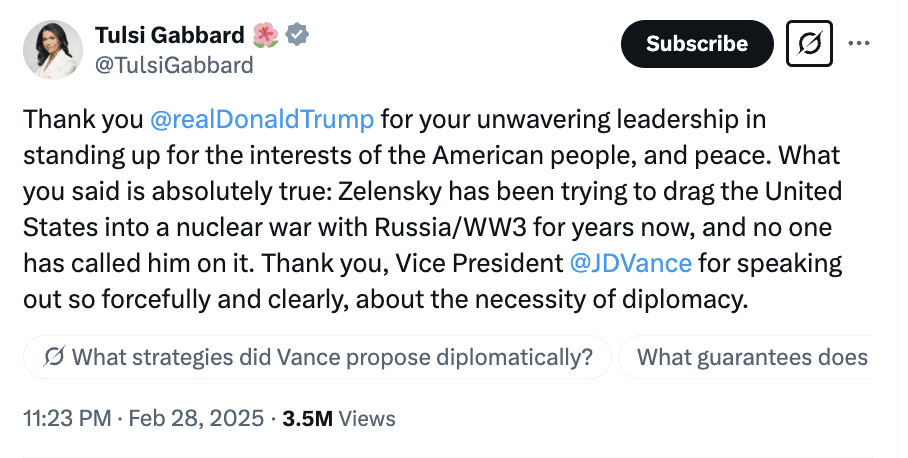
These people are doing precisely the affirmative damage to the US that Democrats warned they would do — most obviously in RFK’s initial dismissal of the measles outbreak spreading from Texas to other states. And they’re doing it after years of parroting Russian propaganda.
The personalization of DOJ
We expected DOJ to be politicized in a second Trump term. I was even cynical enough to imagine that he would pardon all the January 6ers. The denialism about both Russia and January 6 were baked right into Project 2025.
- The Federal Bureau of Investigation, knowing that claims of collusion with Russia were false,5 collaborated with Democratic operatives to inject the story into the 2016 election through strategic media leaks, falsified Foreign Intelligence Surveillance Act (FISA) warrant applications, and lied to Congress.6
- Personnel within the FBI engaged in a campaign to convince social media companies and the media generally that the story about the contents of Hunter Biden’s laptop was the result of a Russian misinformation campaign—while the FBI had possession of the laptop the entire time and could have clarified the authenticity of the source.
[snip]
- The FBI engaged in a domestic influence operation to pressure social media companies to report more “foreign influence” than the FBI was actually seeing and stop the dissemination of and censor true information directly related to the 2020 presidential election.11
But the personalization of DOJ, along with Pam Bondi’s orders to stop chasing foreign influence operations, does something more.
It effectively makes foreign bribery — as well as the kind of kickbacks we saw in advance of Trump’s inauguration — legal.
As I noted here, the SEC, for example, has paused its suit against Justin Sun. As Judd Legum describes, this follows the Chinese-linked businessman’s multi-million “investment” in Trump’s crypto currency.
In March 2023, the SEC charged Sun and three of his companies, accusing him of marketing unregistered securities and “fraudulently manipulating the secondary market” for a crypto token. The SEC accused Sun of wash trading, which involves buying and selling a token quickly to fraudulently manufacture artificial interest.
[snip]
Sun’s purchase put millions in Trump’s pocket. WLF was entitled to “$30 million of initial net protocol revenue” in a reserve “to cover operating expenses, indemnities, and obligations.” After the reserve was met, a company owned by Trump would receive “75% of the net protocol revenues.” Sun’s purchase covered the entire reserve. As of December 1, this amounted to $18 million for Trump — 75% of the revenues of all other tokens sold at the time. Sun also joined WLF as an advisor. While the purchase benefited Trump, WLF tokens are essentially worthless for Sun, as they are non-transferable and locked indefinitely.
Nevertheless, Sun has since invested another $45 million in WLF, bringing his total investment to $75 million. This means Sun’s purchases have sent more than $50 million to Trump, Bloomberg reported. Sun has also continued to shower Trump with praise. On January 22, Sun posted on X, “if I have made any money in cryptocurrency, all credit goes to President Trump.”
Once you’ve installed lawyers who publicly represent they are Trump’s lawyers, once you’ve ensured that no one friendly to Trump will be prosecuted for bribery, then Ukraine was bound to lose any negotiation with Russia. Russia has been dangling bribes in front of Trump for years and now they’ll be free to deliver in plain sight.
And Trump has never placed his own self interest behind the interests of the United States.
The capitulation to Russia
Keep all that in mind as you consider Trump’s abject capitulation yesterday.
Keep in mind that even before yesterday’s ambush of Zelenskyy, Pete Hegseth ordered Cyber Command to stand down any targeting of Russia.
Defense Secretary Pete Hegseth last week ordered U.S. Cyber Command to stand down from all planning against Russia, including offensive digital actions, according to three people familiar with the matter.
Hegseth gave the instruction to Cyber Command chief Gen. Timothy Haugh, who then informed the organization’s outgoing director of operations, Marine Corps Maj. Gen. Ryan Heritage, of the new guidance, according to these people, who spoke on the condition of anonymity because of the matter’s sensitivity.
The order does not apply to the National Security Agency, which Haugh also leads, or its signals intelligence work targeting Russia, the sources said.
CISA, too, has taken its focus off of Russia, something that risk grave damage to private companies as well as the government.
Liesyl Franz, deputy assistant secretary for international cybersecurity at the state department, said in a speech last week before a United Nations working group on cybersecurity that the US was concerned by threats perpetrated by some states but only named China and Iran, with no mention of Russia in her remarks. Franz also did not mention the Russia-based LockBit ransomware group, which the US has previously said is the most prolific ransomware group in the world and has been called out in UN forums in the past. The treasury last year said LockBit operates on a ransomeware-as-service model, in which the group licenses its ransomware software to criminals in exchange for a portion of the paid ransoms.
In contrast to Franz’s statement, representatives for US allies in the European Union and the UK focused their remarks on the threat posed by Moscow, with the UK pointing out that Russia was using offensive and malicious cyber-attacks against Ukraine alongside its illegal invasion.
“It’s incomprehensible to give a speech about threats in cyberspace and not mention Russia and it’s delusional to think this will turn Russia and the FSB [the Russian security agency] into our friends,” said James Lewis, a veteran cyber expert formerly of the Center for Strategic and International Studies think tank in Washington. “They hate the US and are still mad about losing the cold war. Pretending otherwise won’t change this.”
The US policy change has also been established behind closed doors.
A recent memo at the Cybersecurity and Infrastructure Security Agency (Cisa) set out new priorities for the agency, which is part of the Department of Homeland Security and monitors cyber threats against US critical infrastructure. The new directive set out priorities that included China and protecting local systems. It did not mention Russia.
A person familiar with the matter who spoke to the Guardian on the condition of anonymity said analysts at the agency were verbally informed that they were not to follow or report on Russian threats, even though this had previously been a main focus for the agency.
The person said work that was being done on something “Russia-related” was in effect “nixed”.
And, again, this happened before the ambush yesterday.
Eight years ago, as Mueller’s prosecutors started to focus on Roger Stone’s possible implication in a hacking conspiracy with Russia, Trump declared that he was going to partner with Putin; Russia and the US would jointly guard things like elections.

Now, Trump has chosen to unilaterally disarm.
Yesterday, Roger Sollenberger unpacked the Gitub of one of Elon’s boys, Jordan Wick.

In addition to his AI start-up, AccelerateX (which Wired wrote about), Wick has been fiddling with:
- Tracking government employees by union status
- Downloading Xitter DMs
- Identifying open source data on submarine cables, ports, and mineral deposits
Sure, the utility of some of that — tracking union status — maps right onto the Project 2025 plans DOGE is purportedly implementing, even if that, plus the DM download, raise grave concerns about privacy.
But the submarine cables too?
Even as Donald Trump has made his fealty to Putin clear, even as his Director of National Intelligence parrots Russian disinformation (protected now by the FBI), Elon Musk has been vacuuming up all the data of all the government. And every claim that he’s been modernizing networks or searching for fraud have fallen apart.
At this point, we simply cannot rule out deliberate wholesale sabotage.
Update: Thought I’d repost what I wrote in December in response to Kimberly Strassel complaining about Trump’s useful idiot picks.
But I don’t doubt that the rat-fucker wing of Trump’s advisory team believes that Bobby and Tulsi do accomplish something. The question is whether some really smart politicos believe it’ll be a good thing to kill children and give dictators America’s secrets and let the richest men in the world destroy America’s banking system and the dollar exchange — whether they believe this will win lasting approval from America’s great disaffected masses. It might well! It certainly will expand the pool of disaffected Americans, and with it, increase the market for a strong man to respond to it all.
Or whether there’s some reason Trump is tempting Republican Senators to defy his plans to do great damage to the United States. Perhaps he intends to dare them to start defying him in bulk.
Or perhaps the rat-fucker wing of Trump’s entourage simply has an unknown reason they want to destroy America. Maybe Trump has other election debts — debts he’d get in more trouble for ignoring — that make him amenable to dropping policy bomb after policy bomb on America’s children.
But that’s sort of the point. You’ve got Kimberly Strassel up in arms because Trump is going to the mat for a conspiracist with a Democratic name who’ll get children killed. But it’s more likely to do with the policy bombs that RFK will help Trump drop than the specific conversations that led Bobby Jr to drop out of the race.



